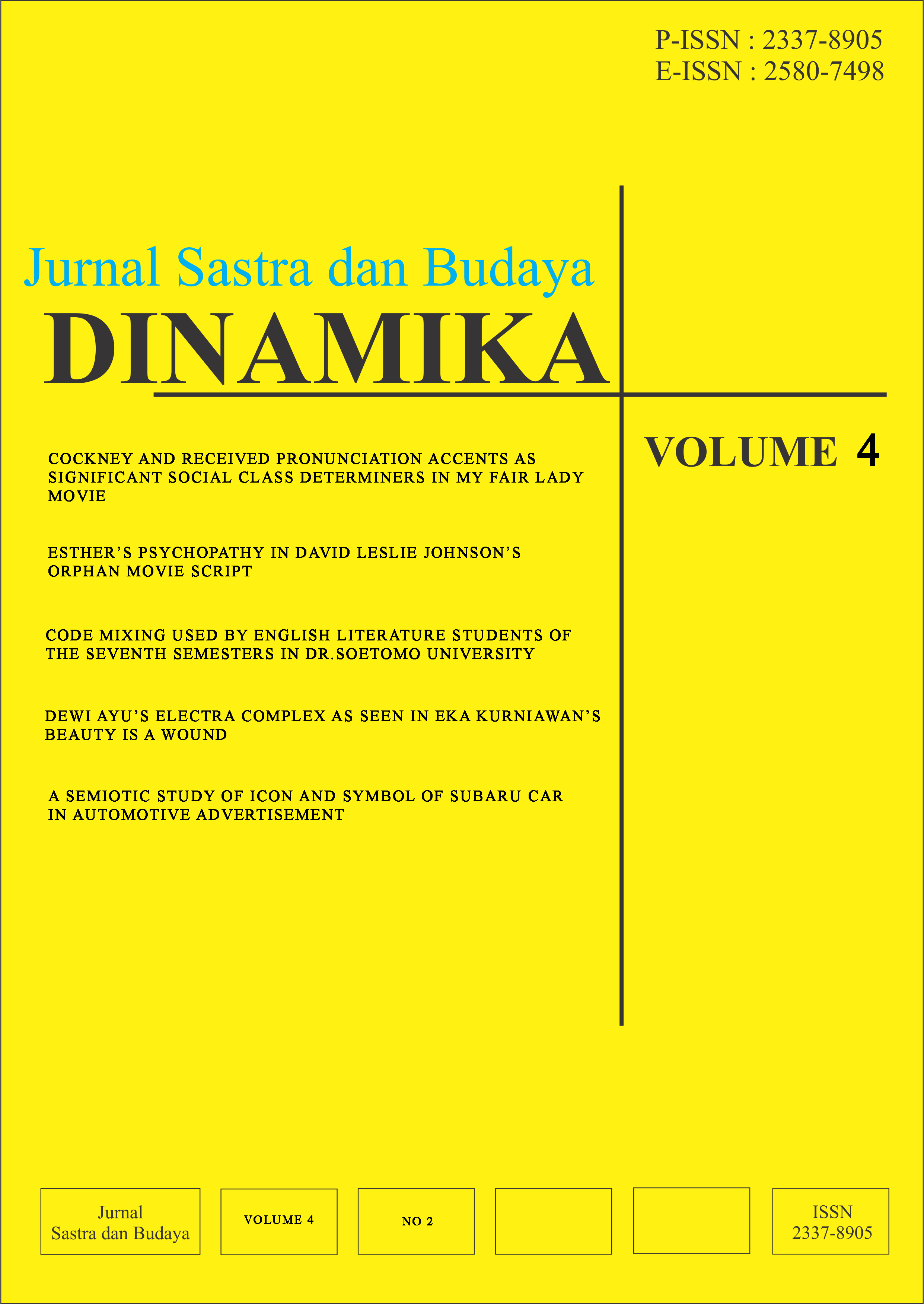CODE MIXING USED BY ENGLISH LITERATURE STUDENTS OF THE SEVENTH SEMESTERS IN DR.SOETOMO UNIVERSITY
 Abstract views: 431
,
Abstract views: 431
,
 PDF downloads: 669
PDF downloads: 669
Abstract
Study entitled "Code Mixing Used by English Literature Students of the Seventh Semester in Dr. Soetomo University" is a sosoiolinguistic study. The selection of objects is based on the environment of Indonesian and English bilingual languages in a circle of seventh semester English literature students at Universitas Dr. Soetomo. This thesis uses descriptive qualitative method. This study aims to determine the type of Code Mixing and the reasons of using code mixing by employing Hoffman's theory. Finally, it was revealed in the findings that the most dominant type of code mixing were Used by English Literature Students of the Seventh Semester In Dr. Soetomo University is Intra-Sentential Code-mixing in the form of phrases. Meanwhile, the dominant intra-lexical code mixing found is verb. As a whole, code mixing is found in the form of inserting English codes into Indonesian utterances. Involving changes to pronunciation only shows four data. This research also reveals the most dominant reasons for using code mixing among seventh semester students is to express group identity.
Keywords: Sociolinguistic, Bilingual and Code-Mixing.
References
Anggaraita. 2012. “An Analysis of Code Mixing and Code Switching Used by Student Lived in a Bording House”, Jalan Air langga Tangah Nomer 7.
Bodgan and Tailor, S. 1975. Introduction to Qualitative Methodes: Phenomenological. New York: A Willey Interscience Publication.
Claros, M, S, C, & Isharyanti, N. 2009. Code Switching and Code Mixing In Internet Chatting ‘yes’, ‘ya’ and ‘si’ a case study.Jaltcall Journal Vol. 5, No.3. Salatiga, Indonesia: The University of Melbourne and Satya Wacana Christian University.
Gumperz, Jhon, J. 1997. The Sociolinguistic Significance of Conversational Code Switching. RELC Journal, Vol. 8, No. 2. Barkelay. University of California.
Hamers, J, F, & Blanc, M, H, A. 1998. Bilinguality and Bilingualism Cambridge: Cambridge University Press.
Hoffman, C. 1991. An Introduction to Bilingualism. New York: Roudledge Tailor and Francis Group.
Hudson, R, A. 1996. Sociolinguistics (second edition). Cambridge: Cambridge University Press.
Marjohan, Asril. 1998. An Introduction to Sociolinguistics. Jakarta: Depdikbud. Nababan, P, W, J. 1985. Sociolinguistik Suatu Pengantar. Jakarta: PT Gramedia. Saleh, Ady, S. 2017. “An Analysis of Code Mixing Used by Teachers of Zarindah
House of Learning in the Teaching Learning Process”. Thesis Makassar: Faculty of Adab and Humanities, State Islamic University of Alauddin.
Sing, Sailendra Kumar. 2001. Multingualism. New Delhi: Bahri Publication.
Spolsky, B. 1998. Sociolinguistics. Oxford: Oxford University Press.
Susilo, D. (2014). Jurnalisme tidak peka gender: Studi analisis wacana pemberitaan perempuan oleh media online tribunnews. com. Dalam: R Ida (ed). Prosiding Post-Graduate Roundtable Universitas Airlangga Surabaya, 6, 17-25.
Wardhaugh, Ronal. 2006. An Introduction to Sociolinguistic. New York: Blackwell Publishing Ltd.













